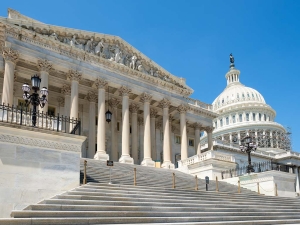Understanding the Past: A History of Government Contracting
Did you know that there was no rule governing how to acquire goods for the state before the end of the 1700s, and therefore, private individuals used to provide it from their personal reserves?
During that time, there was a lack of management and quality control. The government didn’t realize it wasn’t what they required until the products or services were delivered. Later on, after a course of events, government contracting was established in 1795.
Let’s further discuss the history of government contracting, how it all began, and how it has evolved.
History of Government Contracting

Later, over the following 86 years, the Civil Sundry Appropriations Act — passed in 1861 —maintained the idea of publicized procurement activities. 1900 was the era of some of the most critical laws surrounding government contracting since the ASPA was enacted in 1947.
This law helped continue the sealed bidding acquisition process (A technique of contracting known as sealed bids uses public posting of bids, awards, and competitive bids). Afterward, Sherman Act came into existence as smaller firms and labor groups began to demand security in 1980.
This law, which restricted organizations from partnering up or scheming to construct monopolies, is a major milestone for smaller businesses. The legislation made it illegal for these organizations to manipulate, dictate or command pricing in a specific market.
It controlled interstate trade while fostering competition and economic justice. The law was the initial effort by the U.S. Congress to combat the misuse of trusts, like a strategy that allows a select few people to dominate a series of significant sectors.
The Federal Acquisition Streamlining Act (FASA) was enacted in 1994 and was considered some of the major acts in the history of government contracting. The bill completely transformed the government’s contracting activities and made its procurement system easier. Here are a few of the significant changes resulting from FASA.
· Increasing the government’s use of commercial products and services
· Increased the bar for verifying value or price data under ‘TINA’ and made it applicable to civilian organizations
· Simplify the procurement methods for high-volume and lower-value purchases
· Enhancing small businesses access to federal contracting opportunities
· Enhancing the bidding protest procedure
Only two years after FASA, the Federal Acquisition Reform Act (FARA) was enacted to remove obstacles throughout the procurement process. This Act facilitated COTS technology, authorized more Streamlined Acquisition Procedures when the procurement was small and favored contracting based on fixed pricing.
The bill also changed the government’s preferred method of purchasing from low bidder to the bidder offering the best value. To make room for a new system of granting federal contracts, the FASA parted ways from the conventional oversight procedures that had existed for decades.
Under the new rules set by FASA, which we must follow to date, contracts should achieve 90 percent of the specified performance targets to avoid being terminated.
Evolution of Government Contracting Through the Wars
Wars were fought on mass scales throughout the era called the machine age. Modern warfare demanded increasing personnel, food, supplies, clothing, and other resources. For instance, there was only one exclusive buyer of all products and materials for the French and British in the US until the Franco-Prussian Battle.
It directed major military contracts to the businesses to which it belonged. However, at the beginning of the 20th century, it was untenable for one company to remain dominant since the quantities needed were massive. For example, the American government required innumerable pieces of footwear during WWI.
The Government established a method of uniform pay and rationing for the Commissary Dept. ahead of the American Revolutionary period, replacing the contracting method when buying agents received a proportion of the contracts.
Record amounts of weaponry were needed during the Civil War, and a revolutionary contracting method called incentive pricing was introduced. This strategy prioritized a contractor’s potential when delivering swiftly over pricing.
A ‘liberal profit’ was permitted to the manufacturers once a baseline calculation of the price of manufacturing conventional military-grade weapons was established.
Government authority started to diminish as the Cold War came to an end. For example, smaller troops were enlisted, and mandatory recruitment of men in the armed forces was delayed in several European nations. States started outsourcing the majority of their military equipment again.
How Have The Laws Governing Contracting Changed Overtime?
As the decades have passed, the states have discovered several flaws and problems with many of the Laws, and this legislation has been modified as the globe has evolved. Two hundred twenty-five statutes and regulations have either been abolished or significantly altered over time.
The American government’s procurement process has been modernized and made more straightforward with alterations to several laws. Smaller firms can now enjoy the opportunity to bid on government contracts thanks to the new regulations, which lowered the minimum purchase threshold for small acquisitions from a high price of 25,000 to 3,000 dollars.
Due to this, smaller businesses owned by minorities or disadvantaged individuals can now bid on government contracts and enjoy equal opportunities as larger businesses to grow their profits.
Bottom Line
So, what are you waiting for if you are a small or large business owner looking to expand your profits? Start exploring federal contracting opportunities for small businesses to grow your profits and establish a powerful brand identity.
There are several requirements, like GSA SAM registration, that businesses interested in government contracting must meet before they are eligible to bid on government contracts. Meeting these requirements can be daunting and lengthy, so you need to contact the federal contracting specialists at the Federal Contracting Center.
We offer everything from SAM registration support to DSBS registration for small businesses. For further queries on our services, contact 1 (855) 700-5143.


